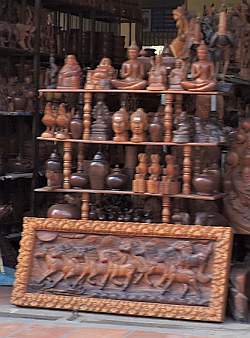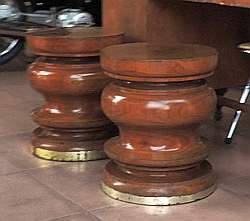I remember when I was a young child and many people in the United States threw trash on the ground or out of car windows, never giving much thought to the environment. Then there came along a “Don’t Be a Litterbug” campaign and slowly attitudes and practices changed to a strong environmental consciousness in the US today.
In Cambodia, we are still at the stage of the US 70 years ago. Here is a picture of a small Phnom Penh street stall selling breakfast. Notice it is the custom to throw any napkins or food scraps on the ground. It seems counter-productive–and certainly un-hygienic and ugly–since someone has to come along and sweep up the trash a little later. Also, in this picture notice all the single-use plastic straws in the gutter and already heading toward the sewer where they will be washed into the Mekong River and then into the sea.
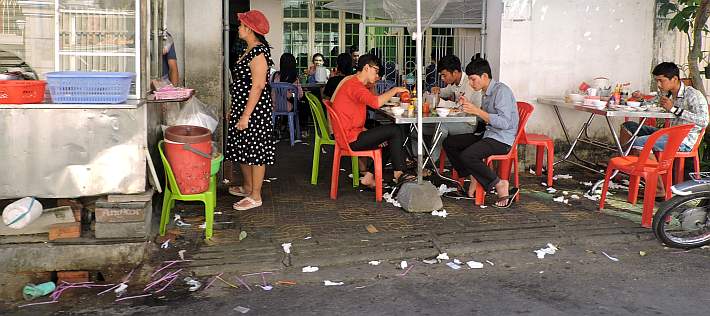
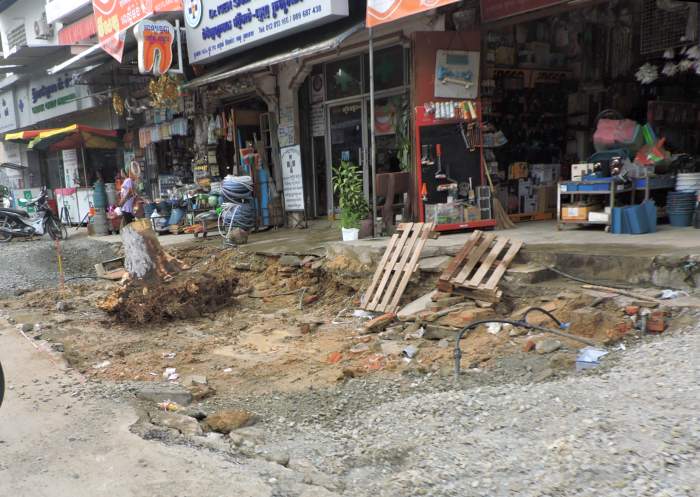

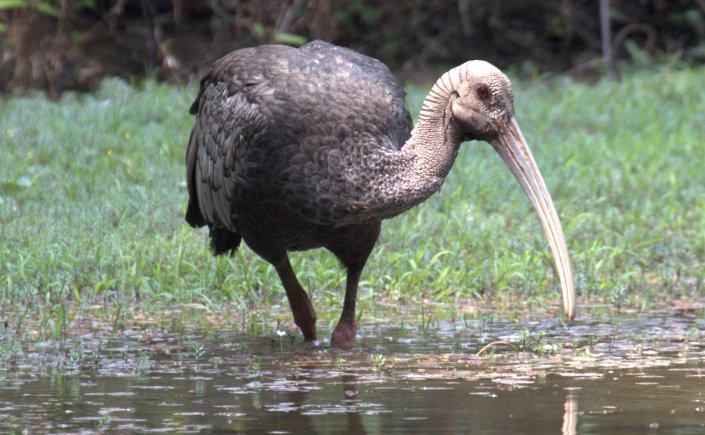
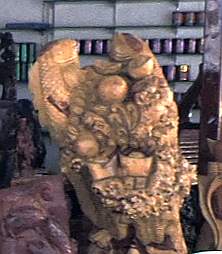 Cambodia’s luxury woods end up not only in more common (although unwieldy) furniture such as tables and chairs, but even the odd-shaped stumps and remnants of tree trunks have great value as they are fashioned into all sorts of art objects.
Cambodia’s luxury woods end up not only in more common (although unwieldy) furniture such as tables and chairs, but even the odd-shaped stumps and remnants of tree trunks have great value as they are fashioned into all sorts of art objects. 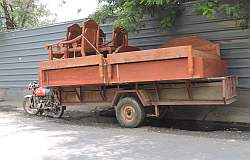 Some of the heavy, culturally-important wooden furniture is sold in shops. A great deal is also sold on the streets of the big cities. Probably produced in rural workshops, it is brought to the city for sale.
Some of the heavy, culturally-important wooden furniture is sold in shops. A great deal is also sold on the streets of the big cities. Probably produced in rural workshops, it is brought to the city for sale.  Another type of establishment that invests heavily in massive wooden furniture are the restaurants, especially those on the road. Take a break from driving to have lunch and you’ll likely find yourself sitting on a heavy wooden stool.
Another type of establishment that invests heavily in massive wooden furniture are the restaurants, especially those on the road. Take a break from driving to have lunch and you’ll likely find yourself sitting on a heavy wooden stool. 